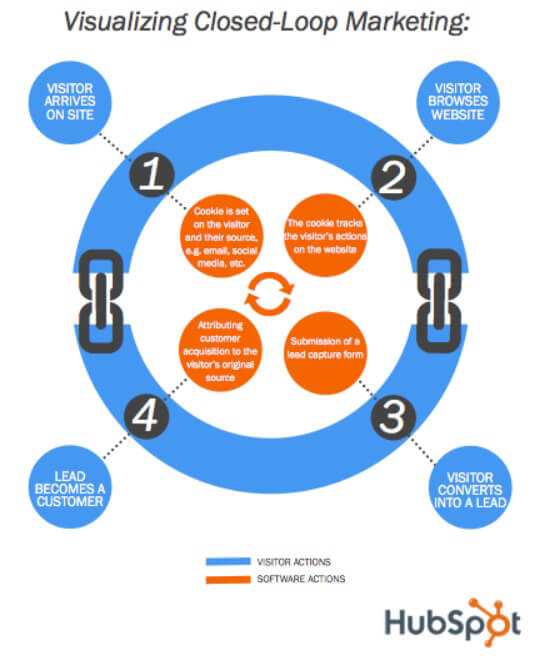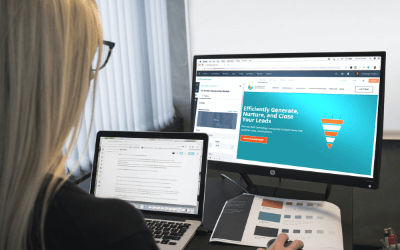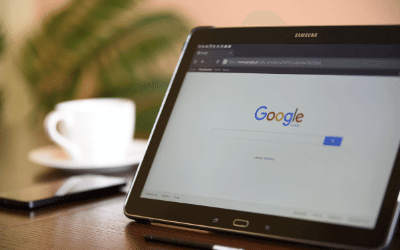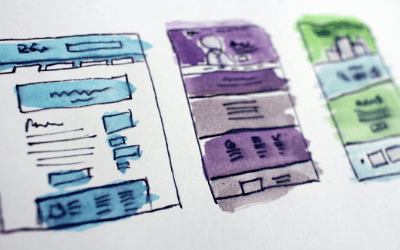At Designzillas, we often use digital marketing terms and acronyms (some call it jargon…?) that may stump individuals who are new to the industry. We decided it was time to put an end to client confusion. So, we compiled a list of the most important and frequently used terms to share with our clients—nay, the world.
Know someone who could use a digital marketing dictionary?
Share this post on Twitter and help them out!
Let us begin.
A
A/B Testing
Also known as split testing or bucket testing, A/B testing is a method of comparing two versions of a webpage against each other to determine which performs better. Variants can be set, like changing the whole layout or just a button color. These variants can be shown to users at random and statistics are gathered to determine which performs better for a given goal. A/B tests can be set up using Optimizely or Google Analytics.
Agile Methodology
The agile method is a project management method used in software development. It breaks up a project into smaller sprints, which can be completed in sequential order, or worked on simultaneously, freeing up the workflow process, and making deliverables more fluid. Clients are more involved in the agile method, as they are able to receive deliverables at the end of major sprints, instead of waiting until the end of a project.
B
Blogging
Blogging is the process of regularly adding written content that is relevant to your website and business goals. Blog articles can be optimized to rank for specific keywords in an SEO strategy.
Bottom of the Funnel (BoFu)
Bottom of the funnel marketing helps to convert qualified leads into customers. This is arguably the most important stage because closing customers is what helps your bottom line. Some methods to close BoFu leads include free assessments, trials or consultations.
Bounce Rate
Bounce rate refers to the percentage of your website visitors who leave the site after viewing only a single page. You can manually calculate this by dividing single-page sessions by all session, or just pull it from your analytics program.
C
Call To Action (CTA)
Also referred to as a “CTA,” we use a call to action to prompt an immediate response from the user. This is commonly seen as a button link.
Click-Through Rate (CTR)
The click-through rate is the percentage of people visiting a webpage or viewing an email and click a link or call to action. You can manually calculate this by dividing CTA clicks by all pageviews or email opens, or just pull it from your analytics program.
Closed-Loop Reporting
Closed-loop reporting refers to “closing the loop” between marketing data and sales data in order to make the best decisions regarding ROI. Here’s a nifty visualization of closed-loop marketing from HubSpot:

Conversion Rate Optimization (CRO)
Abbreviated as “CRO,” conversion rate optimization is the strategic process of increasing the percentage of total website visitors who take a desired action during their visit. This could be a quote request, filling out a form, subscribing to a newsletter, etc.
Customer Relationship Management (CRM)
Commonly referred to a “CRM,” customer relationship management is the technology used for managing your sales team’s interactions with customers and potential customers. We use HubSpot!
E
Editorial Calendar
An editorial calendar is a schedule of content through different channels, whether it be a blog, social media or email newsletter.
Engagement Rate
Engagement rate is a social media term used to describe the percentage of your followers that interact with a post. Each social media platform you post on should have its own benchmark for what a “good” engagement rate is.
F
Friction
Friction is a user experience term that is used to describe website interactions that prevent users from achieving their goals. This could be cluttered navigation or missing CTA buttons, among other obstacles.
G
Google Analytics
At its most basic definition, Google Analytics is a service that tracks and reports website traffic. You can also use Google Analytics’ many tools to help frame your marketing and advertising strategy.
Google Optimize
Google Optimize is a tool within Google Analytics that helps show which of your site experiences are delighting and engaging users and provides solutions for areas that need to be improved.
Google Tag Manager
Google Tag Manager is a tool within Google Analytics that allows you to manage and deploy tags or tracking pixels on your website without modifying the code itself.
H
Heat Map
A heatmap is a visualization map that shows how users interact on a webpage. We use Hotjar to record and analyze heatmaps as part of our funnel analysis process.
I
Inbound Marketing
Inbound marketing is the process of drawing customers to your products, services or other offerings through multiple channels, including social media, content marketing and search engine marketing and optimization.
K
Key Performance Indicator (KPI)
Also known as a “KPI,” a key performance indicator is a measurable value that demonstrates how effectively a company is achieving key business objectives.
Keyword
A keyword is a string of letters that users would type into a search engine in order to find something they’re searching for. This can be a single word or a combination of words.
L
Landing Page
A landing page is not the same as a webpage. It’s a standalone page created specifically for the purpose of an advertising campaign. Common attributes of a landing page include the lack of site navigation and the inclusion of a CTA.
Lead
Leads are defined as any user that expresses interest in your brand. They don’t necessarily need to be “sales qualified” in order to be considered a lead.
Lead Nurturing
Lead nurturing is the process of developing a relationship with users who are interested in what your brand has to offer. This is typically done through several touchpoints, including email marketing and social media.
Lifetime Value (LTV)
The lifetime value of a customer is a prediction of the net profit that is expected to accumulate throughout the entirety of a relationship between that customer and the brand.
Long-Tail Keyword
This term refers to a keyword that is equal or greater to three words in length. This type of keyword is used to target very specific persona groups rather than the masses, in which a short-tail keyword would be used.
M
Marketing Automation
Marketing automation refers to the use of software to automatically execute repetitive marketing tasks. This is typically used in email marketing workflows, social media scheduling and website chatbots.
Metadata
Metadata is a catch-all term for descriptive information about individual website pages. This includes the title tag (page title) and meta description (page description). Meta descriptions should include keywords that users can search by to see your search results in Google. When users search for a keyword, the metadata is shown to a user in the SERP.
Middle of the Funnel (MoFu)
Middle of the funnel marketing targets leads who have already converted through a ToFu content offer and is considered the most complicated funnel stage. A MoFu lead isn’t necessarily fully qualified but needs further credibility building through content pieces like advanced eBooks, case studies, white papers or videos, to name a few.
O
Off-Page Optimization
This is a search engine optimization related term that refers to measures taken outside of a website in order to improve the site’s position on search rankings. Some examples of this include reviews, social media, press releases, etc.
On-Page Optimization
This is simply the opposite of off-page optimization. On-page optimization is a term related to search engine optimization that refers to measures taken within a website in order to improve rankings. Some examples of this include alt text in images, keyword selection, metadata tags, etc.
P
Pay-Per-Click (PPC)
Pay-Per-Click is a method of paid advertising in which the advertiser pays for each click their target link receives from the target audience. An example of this that we use often is Google AdWords.
Pillar Page
A pillar page is a webpage that is essentially the hub of many different topic cluster blog articles. The pillar page covers a broad topic, like “scuba diving lights” for example. Within this page, there are several sub-sections dedicated to brief narratives of more specific topic clusters, like “how to clean a scuba diving light” or “how to replace a scuba light part”. The purpose of a pillar page is to optimize the content in a way that allows the page to rank for multiple long-tail keywords.
Q
Qualified Lead
A qualified lead is essentially a lead that has been vetted by your sales team as someone who is capable of purchase and is a viable prospect with problems that are solvable by your brand’s offerings.
R
Retargeting / Remarketing
Retargeting, also known as remarketing, involves positioning targeted ads in front of a defined audience that has previously visited a website, as they browse elsewhere around the internet.
S
Search Engine Optimization (SEO)
The process of search engine optimization results in the maximum number of visitors to your website by ensuring the site appears high on the list of search results.
SERP
A search engine results page (or SERP) is the page that users receive when they search for a keyword.
Smarketing
Smarketing is a term that combines “sales” and “marketing” both figuratively and literally. Smarketing refers to when sales and marketing come together to achieve the same goals in an integrated approach.
SMART Goal
A SMART goal is a target achievement that is Specific, Measurable, Achievable, Relevant and Timely. An example of a SMART goal would be: to increase web traffic by 25% month over month by December 2019.
T
Top of the Funnel (ToFu)
Top of the funnel marketing is the process of attracting a larger audience of unfiltered, potential leads to your website. Some common tactics for this methodology would be blog articles, tip sheets or eBooks.
U
User Experience (UX)
Otherwise known as UX design, this term refers to the design of the site’s user experience. This can refer to both design and interaction elements. This determines how the user will interact with the design. For example, how users will navigate the web page and use its designed components (such as buttons, menus, and forms).
User Goal
A user goal refers to the final achievement that a user wants to complete when interacting with your brand or website in order to solve their problem or take advantage of an opportunity. Examples of this include purchasing a product/service, downloading a resource, etc.
User Interface (UI)
Otherwise known as UI design, this term refers to the design elements of a user interface, or what a user interacting with a website will see. This can encompass everything from the text and images on a website, to the fonts and colors chosen, down to the layout of a webpage.
User Journey / User Flow
A user journey, or user flow, details the series of actions performed in order to achieve a particular goal. We create user journeys from the perspective of the user persona.
User Persona
A user persona is a semi-fictional representative of your ideal customer. We say “semi-fictional” because personas are often created using data collected from your current customers.
User Story
A user story describes a feature or page of a website from an end-user perspective. We format user stories like: “As a user, I want ____ so I can ____.” This describes the type of user, what they want and why they want it. User journeys help to frame the purpose of each page of a website.






